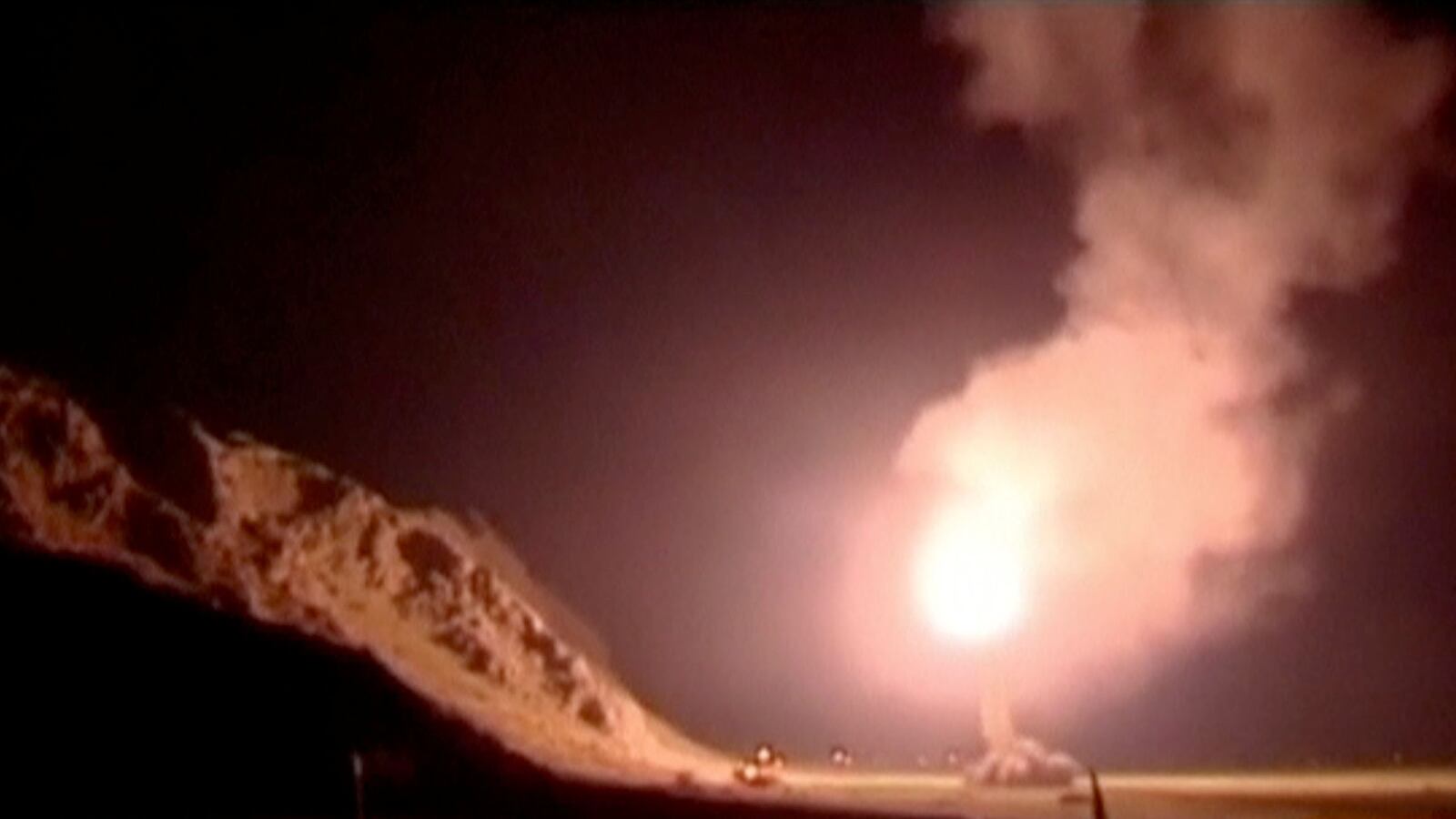Recent weeks have witnessed a growing competition in eastern Syria between U.S.-backed forces and Iranian-led militias, putting the two rival countries on a collision course. To secure a “land corridor” between its eastern border and the Mediterranean, Tehran and its proxies have been willing to confront U.S. forces directly, sending drones and jets to target coalition soldiers in southeastern and northeastern Syria.
While the shooting down of these aircraft by U.S. jets may give the illusion of decisiveness on the part of Washington, the new U.S. administration is in fact showing a lack of strategy, likely stemming from its inability to decide just how far it is willing to go to stem Iranian expansionism.
While some inside and outside the White House and the Pentagon seem to have reverted to Barack Obama’s doctrine—“Don’t do stupid shit”—and are advising caution, it should be argued that the opposite—doing nothing or not doing enough—would eventually result in this very result: “stupid shit.”
Faced with Tehran’s resolve, highlighted by continuous advances on the ground in eastern Syria and persistent aerial attacks aimed at delaying the progress of U.S. allies in the area, Washington seems clueless.
While U.S.-backed advances in eastern Syria may have seemed like a deliberate and aggressive attempt to shut the border, Washington’s defensive stance shows that U.S.-backed forces just happened to be “in the way” of Iranian forces.
The Iranian regime, on the other hand, has set a clear objective and put in the resources necessary to achieve it. The ayatollahs are seeking to control the border between Iraq and Syria to complete a land route that will greatly consolidate their influence over the Middle East.
Few seem to grasp the consequences of such an achievement, which would go well beyond the smuggling of weapons to Iran’s proxies in Syria and indeed in Lebanon.
For those doubting the military advantage of holding this region of Syria and Iraq, we need only remember that the so-called Islamic State was able to conquer significant portions of both countries by blurring the 100-year-old boundary and using cross-border tactics similar to those we now see employed by Iran. Tehran’s forces will be able to move from one country to another in ways that multiply their ability to shape the future of Iraq, Syria, and the region.
The Iranian regime has in fact already laid the groundwork for such a strategy by taking control over a significant portion of the forces fighting ISIS in Syria and in Iraq. Indeed, a significant portion of such irregulars are already more loyal to Tehran than to Damascus or Baghdad.
From this military ability to transfer forces, weapons and commanders, Iran will develop a political force that will make it one of the main decision makers in these two countries.
The violence we are seeing now isn’t going to stop when ISIS is defeated, and in fact may further increase. Broader political solutions to the crises in Iraq and Syria have yet to be drafted and will not come from those with the best political theorists but from those with best and highest number of soldiers on the ground. This also means that Iran has an interest in keeping the U.S. and its allies away from Iraq and Syria.
By itself, this already invalidates one of the main arguments of those advocating de-escalation: concerns that a bolstered U.S. intervention in Syria would result in a confrontation between U.S.-led coalition forces and Iranian-backed Shiite militias in Iraq.
Regardless of what happens in Syria, Tehran will not allow U.S. forces to remain in Iraq and, once ISIS is defeated and the U.S. presence reverts to being an obstacle, Iran will go back to its previous strategy of harassing U.S. soldiers.
The truth is that Iran is already confronting the U.S., that it is poised to continue to do so, and that it will not be convinced to change its course by mere posturing or compromises.
Another legitimate concern expressed by those advocating caution is the likely consequences that an escalating Iran-U.S. rivalry would have on the anti-ISIS fight, and the possibility that this rivalry will in fact delay the fall of ISIS. Yet this argument ignores the possibility that, by letting Iran consolidate its influence in this area, Washington would contribute to re-creating the very conditions that brought ISIS to light.
The perceived Iranian influence in Iraq was one of the main factor behind ISIS expansion, galvanizing disgruntled Sunnis in Iraq’s Anbar province and laying the groundwork for a resurgence of Sunni militancy. Thus, adopting a careful strategy of de-escalation in a bid to “focus on ISIS,” as some advocate, is nothing but self-defeating.
Washington is now faced with a tough decision in what will be a defining moment for the region. The White House can decide to escalate the tensions with Iran by moving from a reactive strategy to a pro-active one, or decide to simply “give up” on any attempt to curtail Iranian influence and focus on the fight against ISIS.
Taking a more aggressive stance definitely has its risks: Iran is unlikely to back down in light of the strategic importance of the disputed area, while the fight against ISIS may indeed suffer from rival forces turning on each other.
More importantly, without a stated goal and a clear strategy the U.S. would face the risk of “mission creep” and find itself without an exit plan. Yet the risks of letting Iran have its way far outweigh the risks in acting decisively.
In the same way Washington misjudged ISIS’s ability to expand prior to its capture of Mosul, at a time when it could have been dealt with with limited resources, the U.S. could inadvertently find itself facing a much nastier threat in the not-so-distant future by deciding to do nothing. And this would be mission creep on a much bigger scale.





